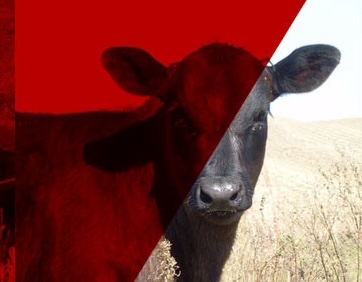Managing weeds in pastures and rangelands is an ongoing challenge for livestock producers. Weeds compete with desirable forage species for nutrients, moisture, and sunlight, reducing overall pasture productivity. A successful weed management strategy involves a combination of monitoring, proper identification, and implementing timely control measures. Understanding the life cycle of weeds and their response to different control methods is critical for making informed management decisions.
Monitoring and Identifying Weed Issues
Early and accurate identification of pasture weeds is the first step in maintaining a healthy pasture. Control techniques vary depending on whether the species is a winter annual, summer annual, biennial, or perennial. If you're uncertain about a particular plant in your pasture, consult your local extension office for assistance with identification.
Weeds often establish themselves in stressed areas of the pasture. Overgrazed areas, flood-prone sites, high-traffic zones, and drought-stressed pastures are prime locations to monitor. Another area to check is where hay was fed over the winter, especially if bales were purchased from outside your operation. Imported hay may introduce new weed seeds that can become problematic under Nebraska conditions. Cattle can also spread weed seeds through manure, so managing feeding locations and movement can help reduce weed spread.
Integrating Livestock for Weed Management
In some cases, weeds may not be a problem but an opportunity. Some livestock species, such as goats and sheep, prefer browsing on broadleaf plants and shrubs, which cattle might avoid. Incorporating multi-species grazing can help control certain weeds naturally while diversifying farm income. This approach can reduce reliance on herbicides and promote a healthier pasture ecosystem.
Weed Control Strategies
If control measures are necessary, consider the following strategies based on weed life cycles:
- Winter Annuals (e.g., Downy Brome/Cheatgrass)
- Germinate in the fall, overwinter, and grow rapidly in the spring.
- Fall control is ideal, as spring control must occur in a short window before seed production.
- Summer Annuals (e.g., Marestail, Russian Thistle, Foxtails, Barnyard Grass)
- Germinate throughout the summer, making total control difficult.
- Control when plants are young and prevent seed development to reduce future infestations.
- Biennials (e.g., Musk Thistle, Plumeless Thistle)
- Form a low-growing rosette in year one and bolt to produce seeds in year two.
- Control during the early bloom stage to minimize regrowth and prevent seed production.
- Perennials (e.g., Leafy Spurge, Canada Thistle, Spotted and Diffuse Knapweed)
- Develop deep root systems, allowing regrowth even after repeated control attempts.
- Control before early bloom when plants are using stored root reserves and follow up in the fall before frost to further weaken plants.
- Shrubs
- Some species, like cedar, grow from above-ground buds and can be controlled through cutting, herbicides, or fire.
- Others, such as sumac and locust, regenerate from below-ground buds, requiring complete removal or chemical treatment for effective control.
Herbicide Considerations
Producers planning to use herbicides should reference Extension Circular 130, 2025 Guide for Weed, Disease, and Insect Management in Nebraska, available online or at local extension offices. Always follow label directions and consider timing, application rates, and environmental conditions for the best results.
Early Spring Weed Control Strategies
For producers looking to get ahead of weed issues in the spring, early action is key. Focus on the following strategies:
- Scout Pastures Early – As soon as temperatures begin to rise, check fields for emerging weeds, especially in areas prone to stress or disturbance. Pay special attention to rosettes of winter annuals and biennials. These can be easily missed, and control is more effective before they begin bolting.
- Target Winter Annuals – Species like Downy Brome and Shepherd’s Purse complete their life cycle early in the season, so herbicide applications should occur before flowering and seed production.
- Use Timely Grazing or Mowing – Grazing livestock or mowing can suppress early-growing weeds before they become competitive with desirable forages. This can be a stand-alone control strategy or used to delay growth for later herbicide applications.
- Soil Fertility and Overseeding – Fertilizing appropriately and overseeding thin pastures can improve forage competition and reduce opportunities for weed establishment.
Drought Considerations
Drought will often open opportunities for weeds to get a foothold by weakening desirable forages. Many of these will be annual weeds that appear in the first few years following drought. Through careful grazing management, some of these weeds will disappear on their own as rangeland and pasture conditions improve and desirable forages are able to outcompete weedy species. Control options can be used if weeds are persistent; however, if rangeland or pasture health is not good, other weedy species may grow rather than desirable forages. In this case, overseeding may be advisable.
Conclusion
Weed management in pastures and rangelands requires a proactive approach. Regular monitoring, maintaining healthy pastures, and using a combination of grazing management, mechanical control, and herbicides, when necessary, can help keep weed pressure low. By staying vigilant and adapting management practices, producers can ensure productive pastures that support healthy livestock and sustainable operations.
Article by Ben Beckman & Ryan Benjamin, Nebraska Extension, Livestock System Educators.

